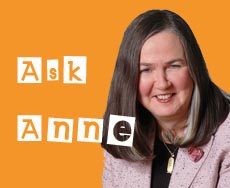What can radiologists do to improve their digital mammography reading skills?
Reading Time: 2 minutes read
This is an increasingly common question in the field of Women’s Health, as more facilities and radiologists make the transition to digital mammography. As anyone who has viewed film and digital mammograms can attest to, there are inherent differences in reading digital breast exams that make training and ongoing improvement paramount.



Despite the inherent clinical benefits of digital technology, digital mammography can slow down the reading process substantially. Magnifying, panning, zooming and scrolling through digital breast images, using various display protocols, can be quite an adjustment for even the most experienced film-based mammographer.
Fortunately, there are steps radiologists can take to improve their digital reading skills.
The first activity is to conduct a rigorous medical outcomes audit of the mammography practice. A required annual event in some countries, the audit serves as a retrospective evaluation of the appropriateness and accuracy of mammographic image interpretation. By analyzing true-positive, false-positive, false-negative and true-negative results, radiologists are able to establish a baseline of measurement that they can work to improve upon.
Radiologists can further improve their skills through self-assessment workshops—an increasingly popular tool offered at conferences around the world. These workshops provide a positive environment for radiologists to practice digital mammography reading and, quite often, measure themselves against their peers.
Participants read from a set of images that include both normal screening exams and screenings that contain confirmed pathology. The images will include different breast types (e.g., fatty, scattered fibroglandular, homogeneously dense and heterogeneously dense) and different types of lesions (e.g., microcalcifications, architectural distortions, masses and masses with calcifications)—all of varying sizes. In addition, most assessment workshops will time participants to help gauge reading productivity.
We’re sponsoring an upcoming self-assessment workshop at the European Congress of Radiology, featuring two highly-renowned mammography screening and pathology experts: Ulrich Bick, MD and Roland Holland, MD, PhD. The American College of Radiology, National Consortium of Breast Centers and Radlist.com are also excellent resources for information on digital mammography training courses and seminars.
Have other methods to improve digital reading skills? Any courses you recommend? Comment below or let us know of any other questions you’d like me to answer!
– Anne Richards, Clinical Development Manager, Women’s Health
Editor’s Note: “Ask Anne” is a new monthly installment in which we pose a mammography-focused question to Carestream Health Women’s Health Clinical Development Manager and all-around mammography expert, Anne Richards.